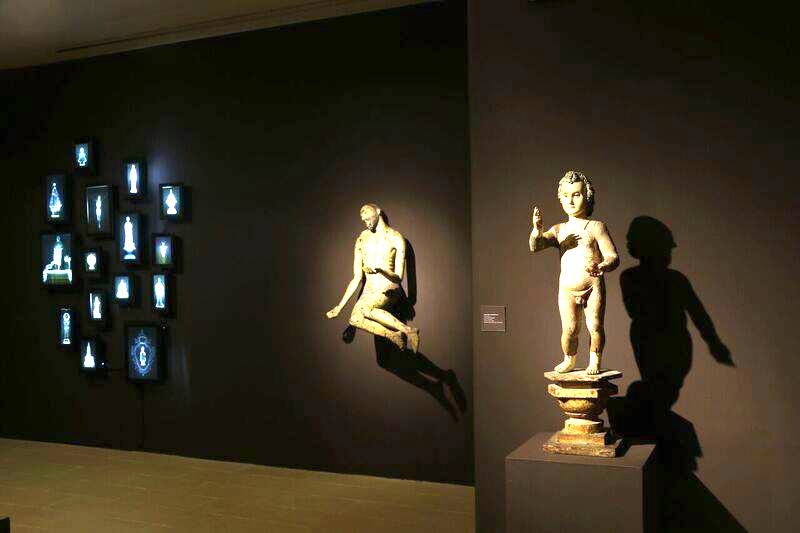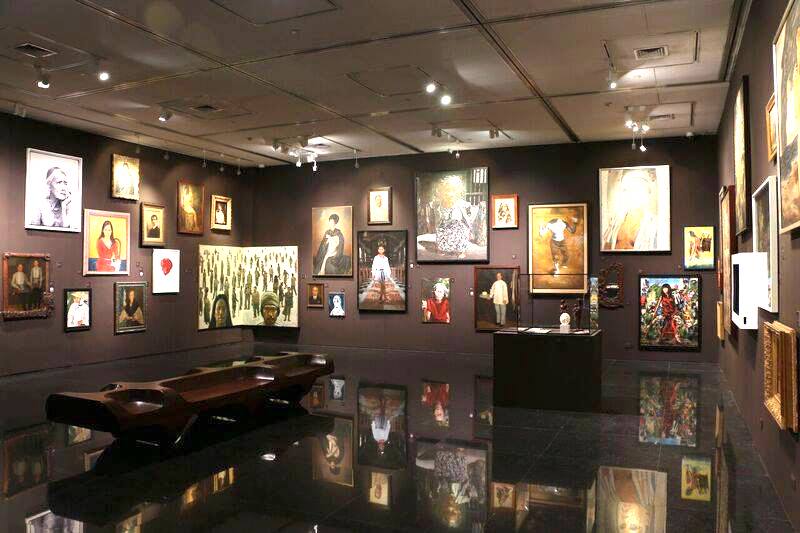NEW YORK — An exhibition currently at the Ayala Museum, titled “Curated by Federico de Vera,” is one of the most peculiar I have seen in recent years. I had never heard of an art exhibition where the person responsible for it is the focus rather than the exhibition.
The show—made possible by loans from museums and private collections—is spread out over three floors and divided into three sections, with generic labels: “Portrait of the Filipino,” “Treasury,” and “Art and Design.” The first section put me in mind of Nick Joaquin’s Portrait of the Artist as Filipino. Joaquin’s title is both specific and layered, linking the portraiture (and the portrait central to the play) of what it is to be Filipino and an artist.
Which brings me to the central question regarding this show: What exactly is the overarching theme of what de Vera has put together? More specifically, what are the threads that connect the artworks and assorted objects within each section as well as with the two other sections? What does de Vera wish for us to see? What possible conclusion or conclusions are we meant to arrive at?
In a wall text that serves as an introduction, de Vera states: “When I first thought about what this exhibition was going to be, I was faced with the difficult task of determining what the focus would be. Since my taste is eclectic and my perspective on art is broad, I decided to undertake the complicated work of curating a show about art and objects found in the Philippines, regardless of form, material, age, or provenance. It was then a matter of locating these treasures from local museums and private collections. The next challenge was weaving a sensible story for the disparate objects [emphasis mine] gathered for the exhibit.”
What might be that “sensible story”? He doesn’t say.
The very lack of a title indicating a “sensible story” or underlying theme is problematic. Is there a curatorial bent here or is this simply the absence of a curatorial vision? It is as though de Vera had had a child of whom he was extremely proud, yet refused to name properly, allowing the child to simply be known as “conceived by Federico de Vera.”
Perhaps he intended this omission, for lack of a better word, as an oddly democratic gesture whereby the naming—christening?—is left to the beholder. But curating a show is hardly an exercise in democracy.
The curator may consult various individuals with expertise in the field, consider the context—historical, social, political—within which the show is to be seen, and take into account the availability of works that would fit the exhibition’s raison d’etre. But ultimately the curator is both judge and jury. Clearly, de Vera is the final (and perhaps the sole) arbiter of the show’s inclusions.
Granted, there are many beautiful, and often exquisite, works here, from colonial times to the present, including paintings by masters both past and present, photographs, religious iconography, videos, bululs, and tapestries. It isn’t enough, however, to put together a plenitude of artworks and artifacts. Beyond the appeal of the beauty on display, what in the curator’s mind binds these wildly varied pieces together? Surely “beauty” isn’t sufficient as the needed intellectual glue. Had a definite curatorial perspective been proffered, no doubt arguments would have arisen, but at least there would have been a point around which the arguments could cohere.
Here the point of this collection seems to be … the collection.
I emailed Dr. Patrick Flores, the respected curator of the Vargas Museum, to ask him his views on the Ayala exhibition. According to him, “No curator in [his or her] right mind would title an exhibition like that. … This is not curatorship at all, only conceit and connection. And it’s bad for Ayala as an institution. I gather that de Vera is a friend of the Zobels. So there you are. If you are close to the owner, you get to curate. What signal does that send to the community and to the art world at large? De Vera is I heard an interior decorator or maintains a boutique in Manhattan. And as it is with his living, so is it with the Ayala gig: to instrumentalize the pieces, and their creative histories and ecologies, and turn them into fixtures of a boutique. I have no words for it. No care, no intelligence, no integrity. The opportunism bedevils me.” Asked to contribute an essay to the show’s catalogue, Dr. Flores refused.
The very lack of a title beyond who was responsible for the show represents a failure of the imagination. What boundaries are being tested? What unique perspective is the public meant to see? As I said, beauty isn’t enough, not if the whole is to be perceived as greater than the sum of its parts.
Ultimately, this kind of a show makes the Ayala Museum seem merely like a high-end emporium of expensive things. It is yet another example of the commodification of cultural artifacts by the “illiterati,” a term I coined in an earlier column, referring to the pitiful state of movie distribution in the country, controlled by a handful of individuals, tied into the ownership of malls. Educated and wealthy they may be, but are indifferent to the implications of cultural dilettantism.
De Vera is described on the museum’s website as a “purveyor of fine things,” “a jewel designer, a collector, and publisher of two books, De Vera Objects and De Vera Jewelry.” Doubtless, from now on, that description will be broadened to include “curator,” with little to back it up. Copyright L.H. Francia 2018



